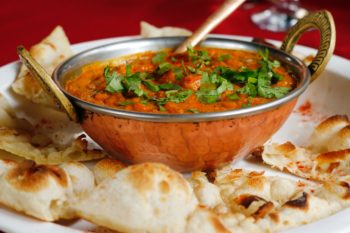I am not really OK with “daijoubu” (だいじょうぶ) Posted by eriko1 on Sep 24, 2020 in Culture
As a former student of sociolinguistics, I am naturally drawn to anything related to (〜関係する) language and society (社会). Recently, I read a tweet from Salam Namaste, a Napali –Indian restaurant in Japan.
だいじょうぶ は ネパールじんにぜんぜんだいじょうぶじゃない
しゃかいじんとおなじぜんぜんわからないにほんごになった…? pic.twitter.com/2UlIY4mAv0
— 本格ネパール・インド料理サラムナマステ?? (@salamnamaste01) July 25, 2020
1)
Napali “Can you eat another nan?”
Japanese “Daijobu”
Does the “daijobu” mean Yes or No?
First of all, “daijobu” (だいじょうぶ、大丈夫) can be translated as “I am good” or “I am OK.” These are also ambiguous (あいまい、曖昧) in English.
Sakam Namaste Restaurant asked on Twitter. Then 19% of Japanese said “Yes (I can eat another nan)” while 63% said “No (I cannot eat another nan).” I believe it heavily depends on (〜による) how “daijobu” is uttered. I am sure some sort of hand/body gestures were involved. But just reading the conversation (かいわ) alone, my instinct (ちょっかん、直感) was to reply, “Yes.” But while I was writing this in English, I started to think this “daijobu” could mean “No.”
Let’s picture the scene. If the Japanese says “daijobu” while looking at the person who asked the question, then it means “yes, I can have another.” If the Japanese says “daijobu” while waving his/her hand with the palm ( 手のひら) showing to the person who asked the question, that means “no, I cannot have another.”
Let’s see 2).
Napali: Can you eat hot (spicy) (辛い) curry?
Japanese: Daijobu.
Is this daijobu yes or no?
Eighty-six percent (パーセント) of Japanese who responded said that this meant “Yes, I can eat spicy curry,” while 9% interpreted this as “No, I cannot eat spicy curry.”
How about 3)?
Napali: Can you eat a large nan?
Japanese: Daijobu.
Is this danjobu yes or no?
Again, 80% of those responded interpreted this as “Yes, I can eat a large nan, “ while 12% decided “No, I cannot eat a large nan” was the answer.
Let’s see 4), the last one.
Napali: Nan at Salam Namaste is huge. Can you eat another (もう一つの) nan?
Japanese: Daijobu.
Is this danjobu yes or no?
Well, this sounds a bit like an advertisement (こうこく、広告). Fifty-seven percent of those responded said that this meant “Yes, I can eat another nan,” while 31% argued this meant “No, I cannot eat another.”
As far as I am concerned, I agree with (〜同意する) the majority for the cases 2) and 3) whole-heartedly. Cases 1) and 4) seem to be the complicated (複雑な) ones. As I said, the case 1) must involve some kind of hand/body gestures or facial expressions (表情). And they would determine the answer.
1) and 4) are very similar (似ている)– both asking if you can eat another nan.
1) Yes, I can eat another nan – 19%. No, I cannot eat another nan – 63%.
4) Yes, I can eat another nan – 57%. No, I cannot eat another nan – 31%.
Why is there a difference?
The main difference is 4) has the additional (追加の) information – nan at Salam Namaste is huge. With that statement, suddenly (突然), more people interpreted “daijobu” as “Yes, I can have another nan.” The “nan at Salam Namaste is huge” statement may be taken as a challenge (挑戦) as in “our nan is huge. I dare you to eat another one.” When you think this way, the case 2) can be seen as a challenge – “it is spicy. I bet you cannot eat it.” And “daijobu” in the case 2) was also interpreted as “Yes, I can.”
We use an expression like だいじょうぶ all the time, and we do not have any doubt that our listeners understand what we mean. But when a question was thrown at us about what we meant; it becomes obvious that even native speakers cannot agree on one meaning. That is why it is good to teach your own language. You will learn so much about the language you were using everyday without thinking.

Build vocabulary, practice pronunciation, and more with Transparent Language Online. Available anytime, anywhere, on any device.





